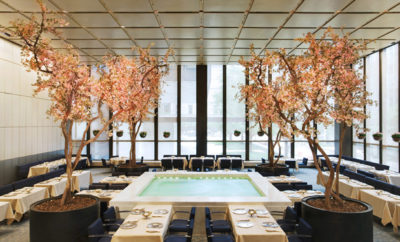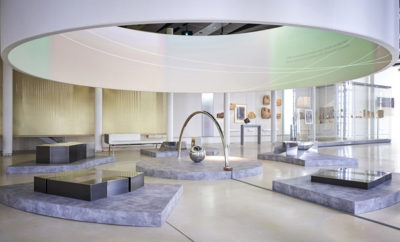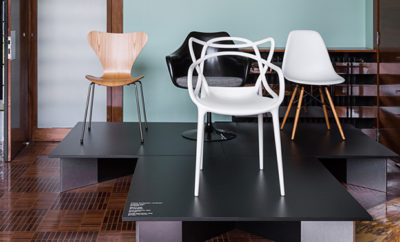
Feature
Looking Good, Steve and Yves
FROM THE EDITOR

If you’ve seen the movie Steve Jobs, you might have noted that a subtext, both in the more-or-less fictionalized film and in the real-life history of Apple, was the triumph of style over substance. The film is primarily about technology (and when you read the history of Apple, the word “architecture” is more often applied to operating systems than to buildings), but when the story is synthesized, with considerable artistic license, it’s clear that Jobs valued design the most.
And yet part of what Jobs was after (far be it from me to understand his many complex motivations and goals) was the democratization of design. He wanted to make sure that this machine that was soon to invade our homes and offices (and ultimately pockets and purses) looked good, that it sent a message that our everyday objects need not be mundane but could be beautiful.
That’s what’s so interesting about Design Miami’s choice for this year’s Design Visionary award, the Swiss-born and California-based Yves Béhar. He is a wonderful designer whose work is widely accessible and no less important because of that (as I write this I am looking at his Jawbone Jambox and wishing I had one of his remarkable Leaf lights). I especially love the fact that he starts the design of his truly forward-thinking products with hand sketches, and by his own account, he asks himself a lot of questions. Importantly, he makes that all-too-rare connection between value and values that generally eludes us these days.
Béhar has always been a thoughtful designer, as is clear with his array of fine products—others among them include a motorcycle, an edition of the Soda Stream called the Source, the Puma shoe bag, and the various Jawbone products. But it is the “$100 Laptop” (more officially the XO computer) he designed for the One Laptop Per Child project that just might be his greatest contribution; more than two million of his sturdy bright green and white laptops are now in the hands of needy children around the world.
On the pages of MODERN we feature many aspirational works. In this issue alone, we show you important contemporary jewelry that is becoming part of major museum collections. You’ll see (this is not a scavenger hunt, but I do encourage you to look through our pages to find them) two different silver pitchers from two different, and important, designers—objects that are true icons of modernism and of twentieth-century design. But you’ll also see a story about the humble pencil, among the most common of everyday objects, in the first of Katrine Ames’s series we are calling Extra Ordinary. And it turns out that the designer of one of the two famous pitchers also designed what was originally called the Waring Blendor. I’ve been devoted to the evolved version of that “skyscraper” blender design (chrome base, two speeds) for years now; it works really well, but I have to say I also really like looking at it.
“Good design,” Béhar once said, “accelerates the adoption of new ideas.” Design—and by this I take in everything from a demitasse spoon to an airport—is style, but design is also politics and philosophy. It is commerce, but it is also culture—value and values.
In 2008 Béhar concluded a Ted Talk by saying, “I’ll finish with just one thought: if we all work together on creating value, but if we really keep in mind the values of the work that we do, I think we can change the work that we do. We can change these values, can change the companies we work with, and eventually, together, maybe we can change the world.” Maybe we can, one product at a time.












